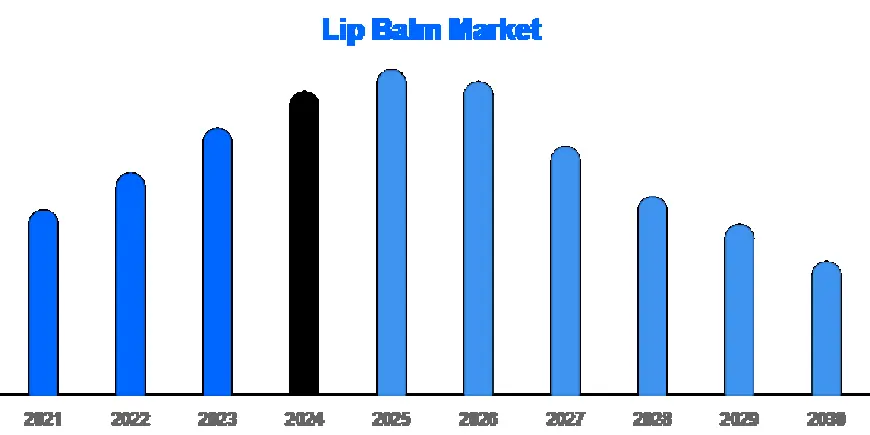Global Herbal Cigarette Market size, share and trends analysis & forecast by 2030
The global herbal cigarette market size was valued at USD 2.1 billion in 2024 and is projected to grow to USD 2.3 billion in 2025, reaching USD 3.2 billion by 2030. The market is expected to expand at a CAGR of 8.9% during the forecast period (2025–2030).

Herbal Cigarette Market: Landscape, Drivers and Outlook
Market Size and Growth
The global herbal cigarette market has established itself as a niche but steadily growing segment, with an estimated value of around 2.1 billion USD in 2024. It is projected to rise to approximately 2.3 billion USD in 2025 and further expand to over 3.2 billion USD by 2030, reflecting a strong compound annual growth rate (CAGR) of nearly 8.9 percent. This growth is predominantly fueled by consumers seeking nicotine‑free and tobacco‑free smoking alternatives amid heightened health awareness.
Market Dynamics and Key Drivers
Herbal cigarettes are composed of plant‑based blends such as rose petals, mint, clover, corn silk and lemongrass, aimed at consumers transitioning away from tobacco. Health consciousness, smoking cessation efforts, and tighter tobacco control policies have propelled the demand for these products among Millennials and Gen Z. Many users view herbal cigarettes as a wellness or clean‑label lifestyle choice rather than a traditional smoking habit.
Flavor innovation plays a significant role in market expansion, with flavored blends such as lavender, basil, green tea and honeyrose gaining popularity among young adults. E‑commerce and wellness platforms further support accessibility, enabling niche brands to reach global audiences. Emerging trends include organic certifications, customizable blends and packaging aligned with eco‑friendly values.
Regional Insights
Asia‑Pacific and Latin America are emerging as key regional growth centers. In Asia‑Pacific, rising anti‑tobacco sentiment and increasing disposable incomes have opened new markets in countries such as India and Japan. In Europe, health‑conscious consumers in Germany, France and the UK are driving interest in nicotine‑free smoking alternatives. North America continues to grow steadily, with Californian and Colorado markets showing strong uptake of herbal and cannabis‑infused blends among younger demographics.
Sector Segmentation and Trends
Flavored herbal cigarettes represent the leading product subsegment, particularly popular among former smokers and young adult users. Consumers aged 25 to 45 constitute the primary demographic, motivated by health awareness and purchasing power. Online sales through wellness marketplaces and retail platforms are expanding rapidly, while physical retail outlets also contribute to visibility and access. Operators in wellness spas and lifestyle brands are integrating herbal cigarette offerings to cater to relaxation and aromatherapy trends.
Market Challenges
Despite growing demand, the herbal cigarette market faces challenges related to safety perception and regulation. Scientific studies indicate that combustion of herbal materials does release tar, carbon monoxide and carcinogenic compounds, raising concerns despite the absence of nicotine. Regulatory scrutiny is increasing, with authorities examining labeling, ingredient transparency, and claims of reduced harm. Additionally, competition from vaping, nicotine replacement therapies and shifting wellness trends may limit broader acceptance.
Opportunities and Competitive Strategy
Herbal cigarette brands have opportunities to position their products as transitional aids for smoking cessation or stress relief, especially for health‑conscious consumers. Partnerships with wellness influencers, integration into lifestyle retail spaces and expansion via digital channels are effective strategies. Sustainability is another differentiator—natural ingredients, biodegradable packaging and organic sourcing can appeal to eco‑aware buyers.
Innovation in product lines, such as mixes with calming botanicals or functional herbs, and expanding into adjacent wellness categories like herbal teas or aromatherapy, offer avenues for diversification. Brands focused on transparent ingredient sourcing and consistent consumer education are likely to build stronger trust and loyalty.
Future Outlook
The herbal cigarette market is poised for steady expansion through 2030, driven by health trends, flavor innovation and broader adoption of nicotine‑free alternatives. However, its long‑term success hinges on regulatory compliance, thorough safety validation and clear consumer communication. Stakeholders combining product authenticity with engaging brand positioning and distribution strategy will be best positioned for sustained growth as wellness continues to shape consumer behaviour.
About Deep Market Insights
Deep Market Insights is a leading global market research and consulting firm dedicated to delivering accurate, data‑driven intelligence across diverse industries. Our mission is to empower businesses with reliable market analysis, enabling smarter decisions and long‑term growth.
What's Your Reaction?
 Like
0
Like
0
 Dislike
0
Dislike
0
 Love
0
Love
0
 Funny
0
Funny
0
 Angry
0
Angry
0
 Sad
0
Sad
0
 Wow
0
Wow
0

















































